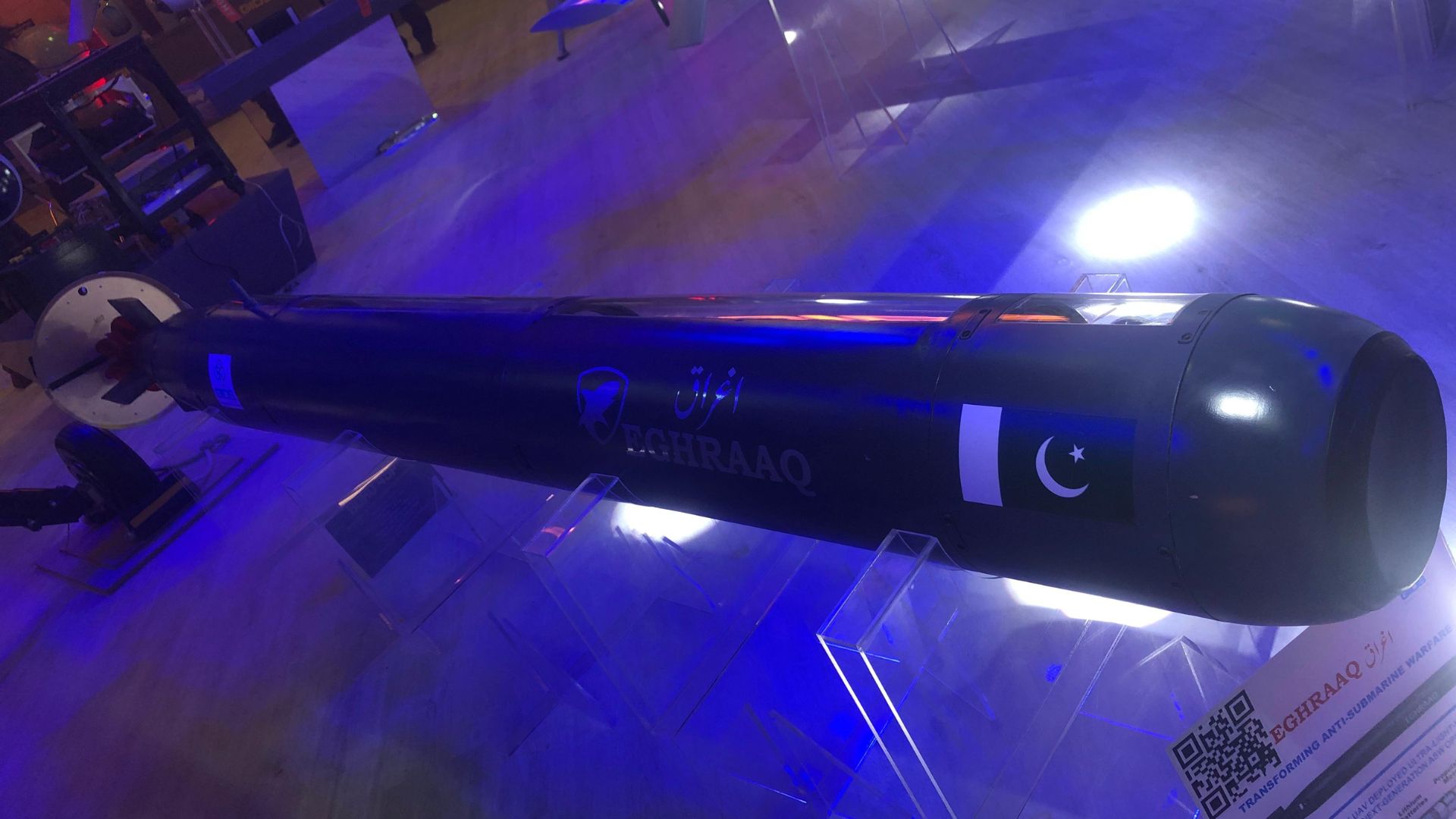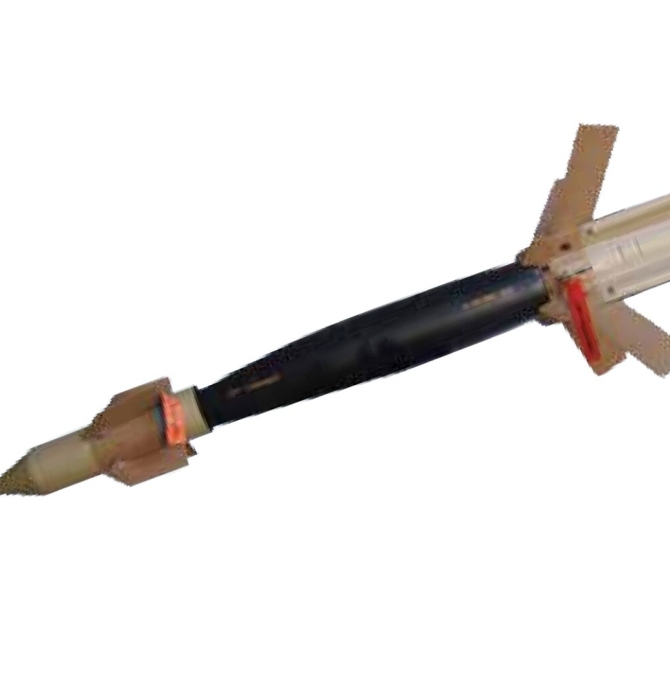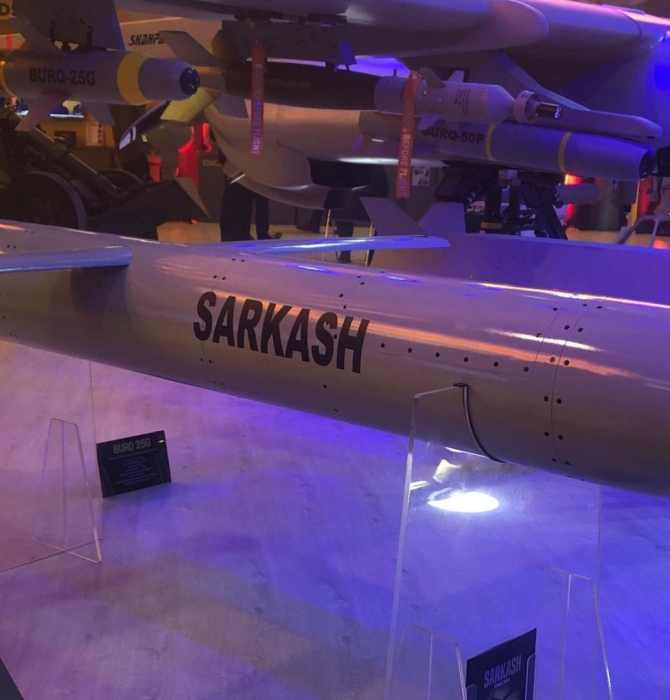5836Views

GIDS Eghraaq Ultra-Lightweight Anti-Submarine Warfare Torpedo
Global Industrial and Defence Solutions (GIDS) first revealed the Eghraaq ultra-lightweight torpedo (ULWT) at the 2024 International Defence Exhibition and Seminar (IDEAS), marking the Pakistani defence industry’s first entry into sub-surface munitions development.
The GIDS Eghraaq represents Pakistan’s growing interest in expanding its anti-submarine warfare (ASW) capabilities, especially through unmanned platforms.
GIDS Eghraaq Design Overview
GIDS is the commercial representative of numerous state-owned entities (SOE) organized under the Strategic Plans Division (SPD). GIDS manages the sales and marketing side of SPD-developed products.
While marketed by GIDS, the Eghraaq was developed by one of these SPD organizations, potentially Maritime Technologies Complex (MTC). MTC was responsible for developing a wide range of the naval solutions marketed by GIDS, such as the numerous sonar systems used by the Pakistan Navy (PN) from its surface and sub-surface combatants.
GIDS had alluded to the development of this weapon in its past material, such as a product roadmap where it listed plans to develop a torpedo with an operating depth of 450 m, range of 6,000 to 7,000 m, and maximum run speed of 35 to 45 knots.
It is possible that the product defined in the product roadmap ultimately became the Eghraaq, paving the way for Pakistan’s first domestic major ASW munition.
GIDS’ promotional material states that the Eghraaq is equipped with an acoustic seeker, a shaped charged warhead, lithium batteries, and propulsion motor, among other inputs. The Eghraaq promises a ‘target acquisition efficiency’ of over 90%.
GIDS Eghraaq Specifications
- Length: 2,794 mm
- Diameter: 0.25 m
- Weight: TBD (likely 200-300 kg like other LWTs)
- Detection Range: >1,000 m
- Maximum Depth: 400 m
- Speed: 40+ knots
The "Silent Service" is Still the Future of Pakistan's Navy
Learn about the Pakistan Navy’s ambitious plans to expand its sub-surface fleet with a mix of large conventional submarines and advanced coastal boats.
Key Capabilities of the Sarkash-I
Overall, the technical specifications of the GIDS Eghraaq mirror other surface-launched and airborne LWTs, such as the Leonardo MU90, Saab Torped 47, and Roketsan Orka. GIDS did not disclose the range of the Eghraaq.
GIDS markets the Eghraaq as an ULWT designed for use from unmanned aerial vehicles (UAV). However, given the Eghraaq’s length and probable weight class, one can expect it to be deployed from ASW helicopters, crewed maritime patrol aircraft (MPA), and multi-mission warships like the Babur-class corvette and Jinnah-class frigate as well.
The messaging on UAV compatibility could suggest a more intentional shift towards adopting unmanned platforms more pervasively in the future. One can certainly expect the PN now to acquire a larger UAV to properly leverage a LWT-sized weapon.
Its current drones (e.g., the Chinese CH-4) are not optimal platforms for ASW operations as they lack the payload capacity required to carry the sensor equipment as well as torpedo and depth charge munitions. Hence, the PN could seek a solution like NESCOM’s Shahpar-III or, potentially, Turkish Bayraktar Akıncı,
From a broader perspective, GIDS revealed several other long-range munitions (from cruise missiles to loitering munitions) that could factor into an unmanned naval strategy. Something like the GIDS Sarkash-I could potentially be reworked into a small anti-ship cruise missile for use from unmanned surface vessels (USV), for example.


